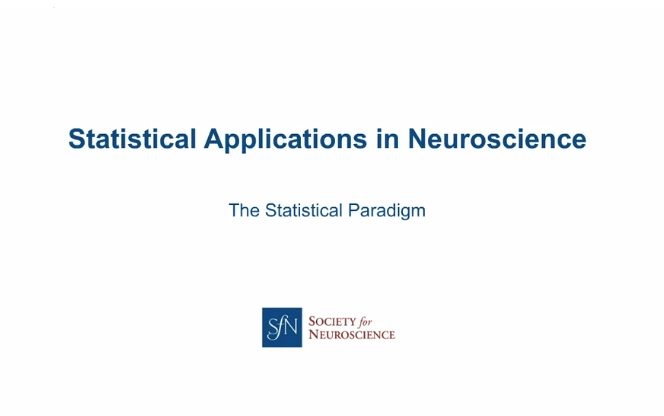Follow this module to learn how to correctly analyse your data and perform statistical testing
After completing it, you should be able to:
- Explain and decide when it is useful / appropriate to use statistics and when not
- Explain the concepts of power calculation, p-values and corrections for multiple testing
- Demonstrate an understanding of the need to take expert advice and use appropriate statistical methods
- Design a detailed statistical analysis plan for their study, including (but not limited to) a power calculation, in collaboration with a statistician
Core materials
Material 1 – Sample size and power
Study this material to learn about:
- The elements that need to be taken into consideration in order to perform a power calculation/ sample size
Type: knowledge clip
Duration: 5 minutes
Created by: Healthcare triage
Material 2 – P-values
Study this material to learn about:
- The meaning a p value
Type: knowledge clip
Duration: 5 minutes
Created by: Healthcare triage
Material 3 – The meaning of P-values
Study this material to learn about:
- Why most published research findings are false :S
- The meaning of statistical power
- The effect of statistical power on the chance of false positive and false negative results
Type: knowledge clip
Duration: 5 minutes
Created by: Healthcare triage
Material 4 – Technical replicates
Study this material to learn about:
- What technical replicates are and their implications for your power calculation
Type: knowledge clip
Duration: 5 minutes
Created by: Stats in the Lab
Material 5 – Basics of power analysis
Study this material to learn about:
- Identify the four numerical values that are used in a conventional power analysis
- Explain how to find information to estimate an effect size
- Define a minimally meaningful effect size
- Describe how to estimate what effect sizes you are able to detect when sample size is limited
Type: knowledge clip
Duration: 5 minutes
Created by: Stats in the Lab
Material 6 – Multiple testing
Study this material to learn about:
- What multiple testing is
- How multiple testing influences the false positive rate
- What to take into consideration when correcting for multiple testing in your statistical analysis
Type: knowledge clip
Duration: 5 minutes
Created by: Stats in the Lab
Material 7 – Interaction effect
Study this material to learn about:
- What an interaction effect is
- The importance of tailoring your power calculation to interaction effects
Type: knowledge clip
Duration: 5 minutes
Created by: Stats in the Lab
Material 8 – No significant difference
Study this material to learn about:
- How to interpret non-significant differences
Type: knowledge clip
Duration: 5 minutes
Created by: Sketchy EMB
Material 9 – Best practices in post-experimental data analysis
Study this material to learn about:
- The benefits of pooling data across experiments done at different times, multiple time points, or different experimental groups
- Tools to improve replicability using independent datasets and cross-validation
- How to analyze data in which you have multiple measures from within the same person or animal, i.e. control for multiple comparisons
- How to avoid “significance chasing,” such as interpreting or processing the data in different ways so that it passes the statistical test of significance
- Estimations of effect size
Type: webinar
Speakers: Dr. Marcus Munafo, Dr. Deanna Barch and Dr. Damien Fair
Duration: 75 minutes
Created by: Society for Neuroscience, featured in the Promoting Awareness and Knowledge to Enhance Scientific Rigor in Neuroscience webinar series
Bonus materials
Bonus 1 – Statistical applications in neuroscience
Study this (more advanced) material to learn about:
- Common applications of statistics in neuroscience, including what types of research questions statistics are best positioned to address, common modeling paradigms, and exploratory data analysis.
Type: webinar
Speakers: Dr. Robert Kass, Dr. Uri Eden and Dr. Brian Caffo
Duration: 75 minutes
Created by: Society for Neuroscience, featured in the Promoting Awareness and Knowledge to Enhance Scientific Rigor in Neuroscience webinar series
Bonus 2 – Exploratory data analysis
Study this (more advanced) material to learn about:
- The basics of Exploratory data analysis (EDA)
- Key tools and its role in inference
Type: weblecture
Speaker: Dr. Brian Caffo (Johns Hopkins)
Duration: 60 minutes
Created by: University of Virginia, featured in the The Foundations of Biomedical Data Science webinar series
Bonus 3 – False Discovery Rates clearly explained
Study this (more advanced) material to learn about:
- The concept of False Discovery Rate
- How the Benjamini-Hochberg method corrects for multiple-testing and FDR
Type: weblecture
Speaker: Dr. Josh Starmer
Duration: 20 minutes
Created by: StatQuest
Additional resources
- Youtube channel: StatQuest – StatQuest breaks down complicated Statistics and Machine Learning methods into small, bite-sized pieces that are easy to understand. StatQuest doesn’t dumb down the material, instead, it builds you up so that you are smarter and have a better understanding of Statistics and Machine Learning.
- Website: Sample Size Matters – An App Exploring Sample Size and Power – provides insight in sample size calculations, through simulations of the variables involved in power calculations
- Online Course: Principles, Statistical and Computational Tools for Reproducible Data Science by Harvard University. Estimated duration 8 weeks, 3–8 hours per week.

